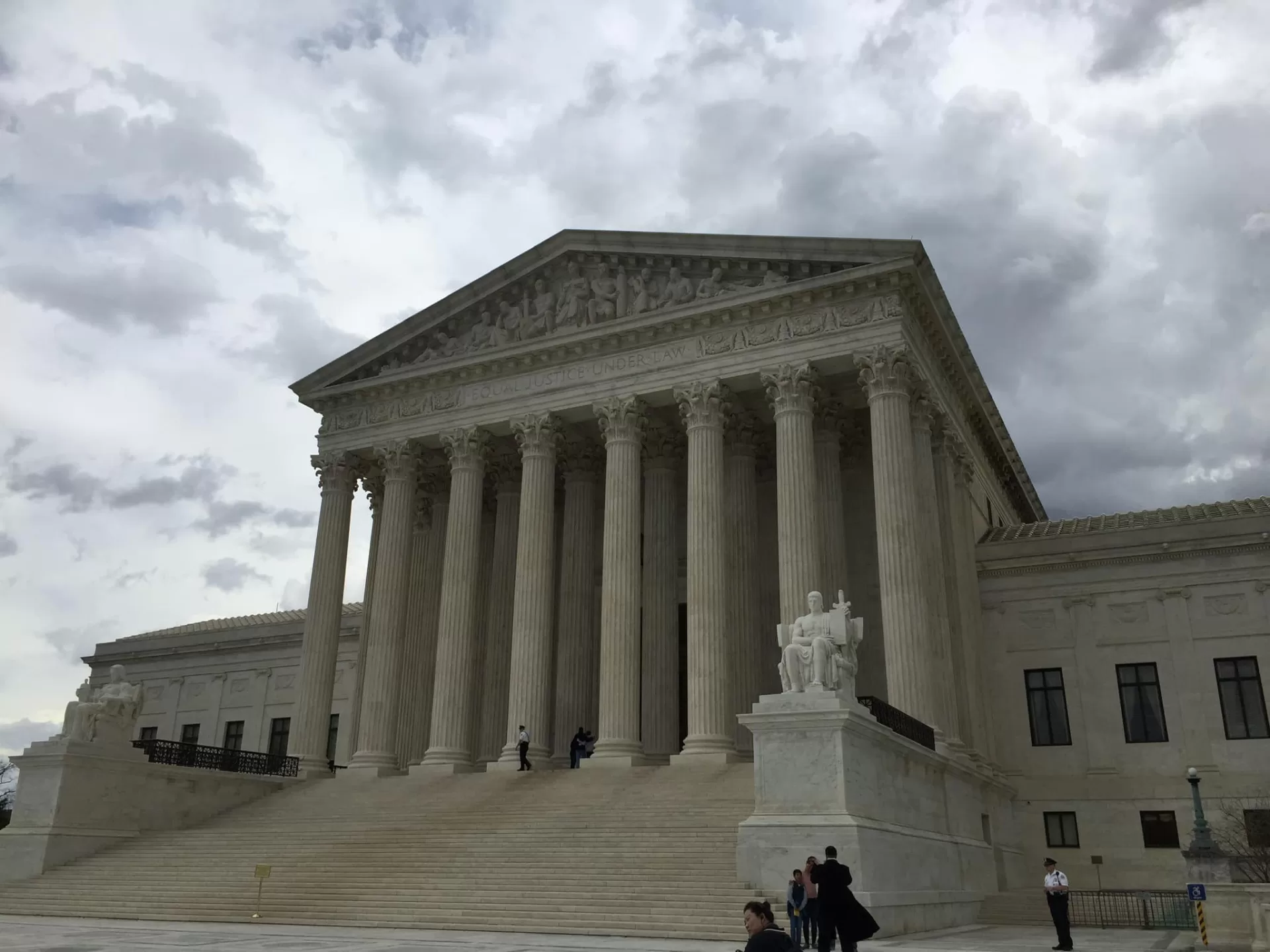The Supreme Court and the Christian Cross
The Supreme Court heard a religion case Wednesday. In this case, leftist activists ask the Court to find a Christian Cross unconstitutional. In contrast, the Great Lakes Justice Center defends the Cross. We submitted a legal brief on behalf of the American Association of Christian Schools, the Michigan Association of Christian Schools, and the Christian Educators Association International.
BACKGROUND
The Bladensburg WWI Memorial is a 40-foot-tall concrete Christian cross standing on a large pedestal. Leftist activists challenging the cross say it violates the Establishment Clause. We disagree.
SUMMARY OF THE ARGUMENT WE SUBMITTED
We say the cross comports with the First Amendment.
Uphold the Christian Cross; Use the Plain Meaning
We ask the Court to apply the plain meaning of the words in the Establishment Clause in its review of the government action here. The Establishment Clause simply prohibits federal laws “respecting an establishment of religion.” The memorial cross does not establish a religion. It does not subject the American citizenry to governance under a theocracy. Moreover, the cross does not coerce the American citizenry, by force of law and penalty, to practice an official religion. It does not, therefore, violate the plain meaning of the Establishment Clause.
Uphold the Christian Cross; Overrule Judicial Activism
We additionally urged the Court to overrule Lemon v. Kurtzman. This case, the product of judicial activism, unconstitutionally empowers unelected judges to supplant politically accountable governance, with their own protean preferences. Thus, Lemon’s judicially contrived secular purpose and religious endorsement prohibition:
- exceeds the scope of judicial power stated in Article III of the Constitution;
- bypasses constitutionally required processes for amending the Constitution;
- undermines the legitimacy of the judiciary;
- creates substantial unpredictability in the law; and
- fosters unjustifiable hostility toward the religious identity and dignity of innumerable U.S. citizens.
Analysis of the Justice’s Questions at Oral Argument
While one ought not definitively declare an outcome from the questions a Justice asks during Oral Argument, doing so provides some helpful predictive insight.
Justices Sotomayor, Kagan, and Ginsburg
During oral argument, Justices Sotomayor, Kagan, and Ginsburg seemed willing to resolve the question before the Court using the Lemon test. Their questions focused on whether the government’s placement of the cross had a secular purpose and whether it endorsed Christianity. It is unclear from the questioning which way these justices would rule if they applied the Lemon test to the particular cross here. They could find it constitutional as a secular display or unconstitutional as a sectarian endorsement. While the former is more preferable than the later, neither protects religious conscience.
Justice Breyer
Justice Breyer suggested that while the history and tradition of the nation originally included Christianity, he suggests the current cultural environment provides an opportunity to deem the past irrelevant and start anew. His questioning suggested this should occur. Conservative Justices look to history and tradition to determine the original meaning of the words of a constitutional provision. Breyer, a left-leaning justice, normally uses an arbitrary “living constitution” analysis to change the meaning of constitutional provisions he desires to evolve or change. Now, pretending to use the conservative interpretative approach, he is doing the same thing here, just covering up his leftist analysis with a conservative “fig leaf.”
Justices Kavanaugh and Gorsuch
Justices Kavanaugh and Gorsuch seemed willing (eager) to overrule the Lemon test. Their questions focused on how the test creates substantial unpredictability in the law – making it difficult for judges in the lower courts to resolve disputes in this area. The questions also addressed problems that occur when applying that test in various contexts. The lawyer challenging the cross claimed that the cross before the Court violated the Lemon test (and therefore violated the Establishment Clause). She assured Justice Gorsuch that virtually all of the other crosses around the country were constitutional though. Justice Gorsuch asked her what she would think if the Court put that conclusion in their decision. She was caught, and conceded the arbitrariness of the Lemon test.
Justice Thomas
Justice Thomas, as usual, asked no questions. However, his previous decisions suggest that he supports abandoning the Lemon test. Indeed, his previous decisions suggest he may go even further, allowing religiously established State governments, but not Federal establishments.
Justice Roberts
Justice Roberts kept his powder dry, asking probing questions on both sides but not revealing too much. However, he did seem to recognize the concerns with the Lemon test.
An Optimistic Prediction with a Caveat
In conclusion, my best guess is 5-4, maybe 6-3 for the cross – with a possibility that the Court overrules the Lemon test. One caveat exists though. The Court asked no probing questions about how government funding for upkeep might affect the outcome of the case.
Pray, therefore, for an honest and just outcome. #SaltandLight











